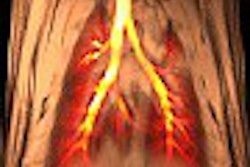Imaging technology that combines functional and structural data has become increasingly important as researchers and clinicians seek to gather and integrate as much information as they can. In addition to PET and functional MRI (fMRI) technology, researchers continue to explore techniques based on optical imaging.
In an article published in this month's Nature Biotechnology, a group at Texas A&M University in College Station report on the use of a relatively new kind of optical imaging technology, laser-induced photoacoustic tomography (PAT) for neuroscience applications (July 2003, Vol. 21:7, pp. 803-806).
Optical imaging produces data about the structural and functional properties of the nervous system by tracking the optical signals that occur during changes in blood volume, oxygen consumption, and cellular swelling. Using it to image the brain offers benefits over other modalities because optical contrast can perform tasks such as detecting cell responses to stimulation.
But "pure" optical imaging also has its downsides, including weak spatial resolution and no depth resolution for applications like transcranial and invasive open-skull imaging. According to Xueding Wang and colleagues, PAT technology addresses these concerns and provides high contrast for soft tissues, mapping the functional organization of the cerebral cortex as well as performing noninvasive transdermal and transcranial neuroimaging at high spatial resolution.
The team used PAT to visualize the brain structure, brain lesions, and cerebral cortical responses to whisker stimulation of rats. To create the photoacoustic waves, Wang and colleagues used short laser pulses (532-nm) coupled through water in an assay tank into a high-sensitivity, wide-bandwidth ultrasonic transducer. The transducer detected the photoacoustic signals in the imaging plane at each scanning position. A computer gathered and synthesized the digitized photoacoustic signals to determine the distribution of optical absorption within the tissue.
The researchers compared transdermal and transcranial images taken with their PAT system with an anatomical photograph taken after the use of the technology, and found that various soft tissues in the brain were plainly visible in the PAT images. They also used PAT to visualize the rats’ response to whisker stimulation, finding that the vascular patterns in the parts of the rats’ brains activated by the stimulation resulted from changed in the large blood vessels in the superficial cortex.
The temporal resolution of the PAT system used was not high, because it used a single-element ultrasound transducer. However, the team predicts that a transducer array and a laser system with a higher repetition rate could allow PAT to be used for real-time imaging. The team believes PAT will be able to be used to image brain neoplasia and metastases from distant organs, as well as pathologic processes at molecular genetic levels.
By Kate Madden YeeAuntMinnie.com contributing writer
July 30, 2003
Related Reading
SUNY adds to optical imaging patent portfolio, June 13, 2003
Start-up firm Photonify sees promise in optical imaging, January 14, 2003
Copyright © 2003 AuntMinnie.com




















